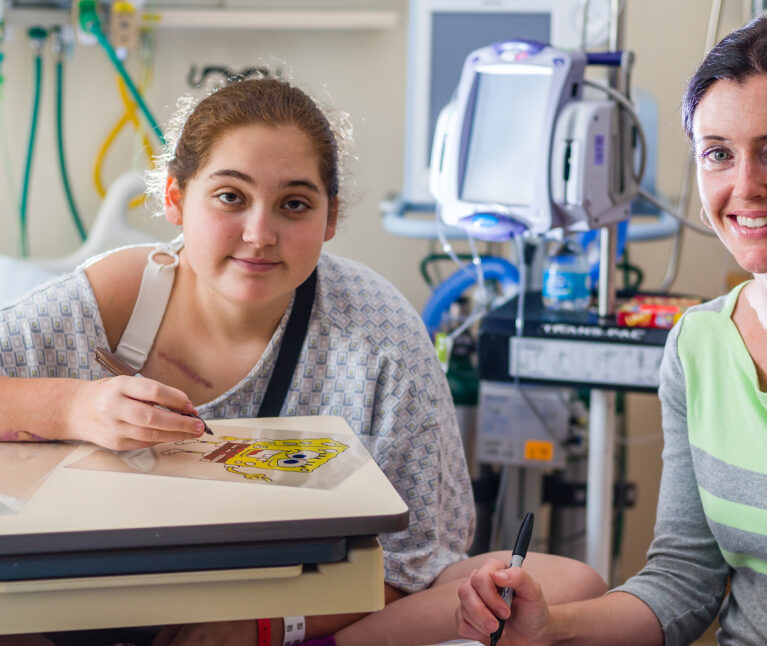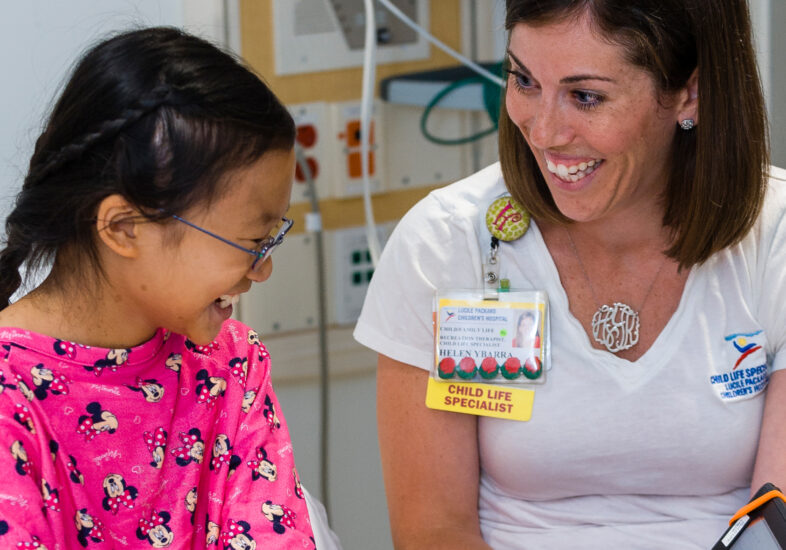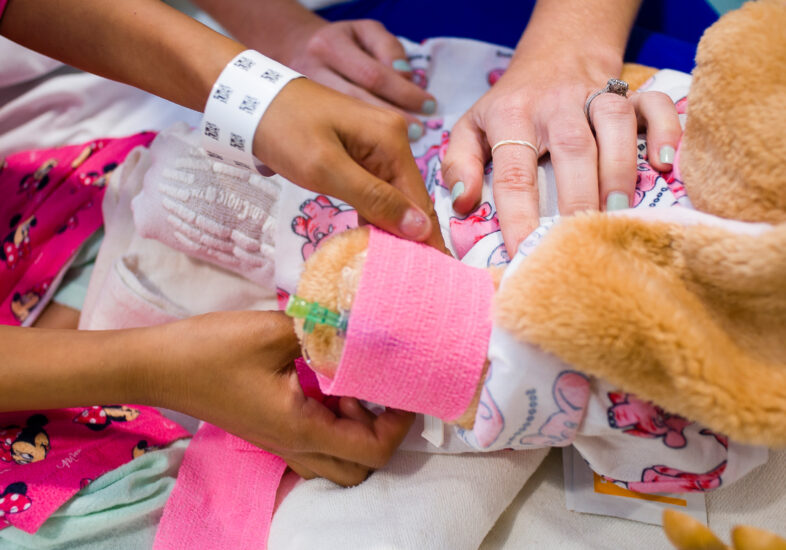On a recent Tuesday, 9-year-old Sarah Grace sat on a hospital bed in a bright pink Minnie Mouse gown, waiting for a CT scan.
This wasn’t Sarah Grace’s first scan, but it would be her first without general anesthesia, meaning she would be awake while an IV line was inserted, and while the CT machine clanged loudly around her head. She’d have to lie perfectly still for more than 40 minutes or risk ruining the scans. It was an intimidating scenario.
Enter Helen Ybarra and Deana the stuffed bunny.
One of 22 certified child life specialists at Lucile Packard Children’s Hospital Stanford, Ybarra serves as a bridge between children and medical staff, helping medical care run smoothly and efficiently while ensuring a child’s comfort.
“There will be a lot of things out of her control, so I’ll empower her with choices,” Ybarra said. “‘Do you want to use a numbing patch before the IV goes in? Which movie do you want to watch? Do you want your mom to stand near your feet as you are scanned?’”
Following Ybarra’s instructions, Sarah Grace placed a doll into a wooden model of the CT machine, and helped give an IV to Deana the stuffed bunny. Soon after, Sarah Grace and her mom headed into the CT room, with Ybarra available via a two-way headset. When it was over, Sarah Grace left with a smile on her face.
A Member of the Care Team
Every day, throughout our hospital, child life specialists collaborate on care teams to ensure that patients and their families play an active role in their care.
“I attend rounds throughout the week and talk with staff about patient goals, treatment, upcoming procedures, and coping needs,” said Nick Gliatas, a child life specialist in the Bass Center for Childhood Cancer and Blood Diseases.
The responsibilities of child life specialists span from procedure preparation and expressive play activities, to bereavement and sibling support.
“As child life specialists, our work is based on child development theory and supporting children in the face of illness, surgery, or hospitalization,” added Allison Brooks of the cardiovascular intensive care unit. This focus on children’s emotional well-being can help speed up healing and shorten hospital stays.
A Hand to Hold
In the emergency department, child life specialist Kristen Beckler met a 5-year-old boy who had a laceration above his eye.
Sitting at his level, Beckler spoke to the crying child and described step-by-step what would happen, using words that he could understand.
“First we’re going to put a cold cotton ball over your cut,” she said, explaining the numbing process. “Then you will go to a room, watch a movie, and wait for the doctor to decide how to fix it.”
Beckler described the sensations he’d feel receiving stitches, and she and the child came up with a coping plan that included holding her hand, watching videos on an iPad, and breathing exercises.
“He did amazing and was so proud of himself after it was over,” Beckler recalled. “It was a very sweet moment to see him succeed. There were a lot of high fives and fist pumps as he headed out the door.”


